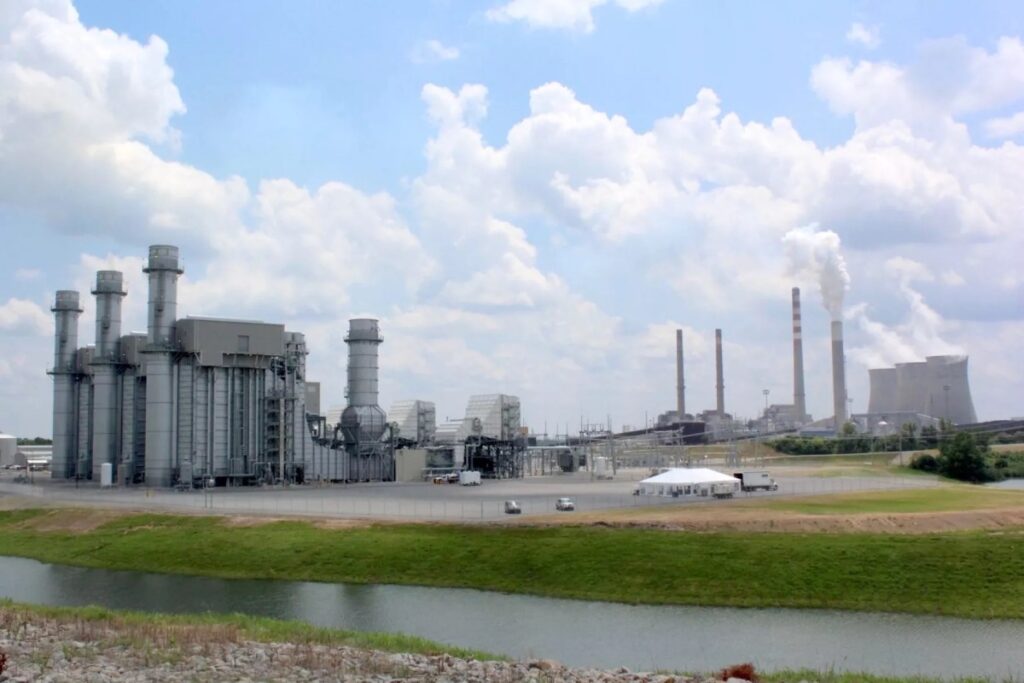WASHINGTON – Despite policies the Biden administration has championed to target climate change, recent findings show carbon dioxide in the atmosphere is at an all-time high, raising the stakes for November’s presidential election among advocates for aggressive climate action.

Recent data from the National Oceanic and Atmospheric Administration indicate that carbon dioxide in the atmosphere has been at record high levels the past two years. The jump from 2022 to 2024 is the largest two-year increase NOAA has recorded in the 50 years the agency has collected data.
As the presidential election approaches, key policy measures to curb climate change are at a turning point, advocates say, with a second Donald Trump presidency likely to defer to fossil fuel interests and roll back much of the environmental progress made under Biden.
The record jump in carbon dioxide came despite President Joe Biden’s focus on environmental and climate issues. Biden’s administration has taken more action on climate — by issuing executive orders, proposing and supporting ambitious legislation and setting carbon-reduction goals — than any of his predecessors, according to an analysis by the liberal think tank Center for American Progress.
On the campaign trail in 2019, Biden told voters, “We’re going to end fossil fuel.”
His campaign then announced in July 2020 its plan to eliminate energy production through fossil fuels by 2035.
And in the early days of his presidency, Biden promised to cut 2005-level emissions in half by 2030.
Biden’s climate record
According to the World Resources Institute, a Washington-based research organization, the U.S. is on track to achieve that goal.
A study in January 2024 revealed that greenhouse gas emissions — which include many types of gases along with carbon dioxide — were down 2% in 2023 from the previous year and were down more than 17% compared to 2005 levels. At the same time, the U.S. gross domestic product, a figure that approximates total economic output, grew by over 2%.
“What this suggests is that the Biden administration’s climate policies are beginning to work and that we’re bending the curve of emissions downward,” said Erik Schlenker-Goodrich, the executive director of the conservation group Western Environmental Law Center.
Biden has also set the U.S. economy on a path away from “fossil fuel and carbon-intensive economic sectors,” Schlenker-Goodrich added.
He pointed to the Inflation Reduction Act — the sweeping climate, health and taxes law Congress passed in 2022 with only Democratic votes and major backing from the Biden White House — as a significant investment in tackling climate change and building the U.S. economy around climate-friendly practices.
Biden signed the law in August 2022. It provided $369 billion in tax credits and spending for renewable energy programs, including electric vehicle tax credits, and provides incentives for climate-smart agriculture.
Climate and infrastructure
By 2030, the IRA will also create more than 1.5 million jobs in clean energy manufacturing and add $250 billion to the economy, according to projections from the Labor Energy Partnership, a collaboration between the organized labor giant AFL-CIO and the Energy Future Initiative, a D.C.-based clean energy policy nonprofit.
The climate-focused law and the $1.2 trillion bipartisan infrastructure law that Biden signed in 2021 provide vital resources to developing climate-friendly practices, Schlenker-Goodrich said.
“The key is to set a foundation through U.S. infrastructure,” he said.
The administration has continued to pursue climate initiatives.
Following the NOAA announcement of increased atmospheric carbon dioxide, the Department of Energy and NOAA signed a memorandum of agreement to collaborate in the future on climate initiatives related to marine carbon dioxide removal and research. The effort is “an important pathway” to reach their emissions goal in 2050, according to a NOAA press release.
“Under the assumption that the Biden administration has a second term, the second term should be devoted to looking at how we can facilitate a just transition away from our dependency on oil and gas,” Schlenker-Goodrich said.
The American Petroleum Institute, the leading oil and gas industry group, did not respond to a message seeking comment.
Contrast with Trump
Trump has criticized Biden’s record on climate and energy and has pledged to defer more to the oil and gas industry.
At an April meeting at Mar-a-Lago, the former president’s South Florida club and residence, Trump told the country’s top oil executives that if elected, he’d reverse Biden’s environmental policies and stop all future ones, according to the Washington Post. In exchange, Trump asked them to contribute $1 billion to his campaign.
Following the meeting, Democratic Sens. Sheldon Whitehouse of Rhode Island and Ron Wyden of Oregon launched an inquiry and called into question the reported quid-pro-quo fundraising tactics.
“Whether it’s Donald Trump’s promises to roll back climate policies in exchange for $1 billion in campaign cash or the fossil fuel industry’s collusion to jack up prices at the pump, Mr. Trump and Big Oil have proven they are willing to sell out Americans to pad their own pockets,” Whitehouse said in a written statement to States Newsroom.
“Let me be clear: A Trump Presidency would be disastrous for climate progress and for our efforts to shore up our economy against climate damages.”
The Biden campaign called attention to Trump’s ties with the fossil fuel industry as well, writing in a statement that Trump intends to work in their favor.
“Donald Trump calls climate change a ‘hoax’ and promises oil and gas executives they’ll get whatever they want behind closed doors if they donate to his campaign,” a campaign spokesperson wrote. “Our planet needs a president who will fight the climate crisis, not someone who pretends it doesn’t exist.”
When asked what a Trump presidency would look like for climate change, Schlenker-Goodrich of Western Environmental Law Center said, “it would prove disastrous.”
“When it comes to climate action, they’re going to do everything they possibly can, within their power and likely go beyond what those legal boundaries are, to support the fossil fuel industry at the expense of our country’s energy transition,” he said.
First term
During Trump’s term, his administration was “largely successful in weakening existing environmental regulations” that were set during Barack Obama’s presidency, according to the Brookings Institution.
By August 2020, the Trump administration had taken 74 actions to weaken environmental protections, according to the Brookings analysis.
The 2024 Trump campaign has already outlined the former president’s plans to change environmental and energy policy if elected in November. This includes drilling for natural gas and oil, or what Trump often calls “liquid gold.”
Trump also plans to withdraw from the Paris Climate Accords as he did in 2019 and combat Democratic efforts to implement the Green New Deal, an ambitious climate platform backed by members of the Democratic Party’s progressive wing, according to his campaign website. He also plans to reverse Biden’s efforts to manufacture more affordable electric vehicles in the U.S.
His priorities include ensuring the lowest energy prices for Americans, reducing inflation, and bringing more jobs to U.S. workers through fossil fuel industries, a campaign spokesperson said, adding that the Biden administration has done the opposite.
“No one has done more damage to the American oil and gas industry than Joe Biden,” the spokesperson wrote.
This article is republished under a Creative Commons license from Kentucky Lantern, which is part of States Newsroom, a network of news bureaus supported by grants and a coalition of donors as a 501c(3) public charity. Kentucky Lantern maintains editorial independence. Contact Editor Jamie Lucke for questions: info@kentuckylantern.com. Follow Kentucky Lantern on Facebook and Twitter.
Lia Chien is a Capitol Reporting Fellow based in the States Newsroom Washington, D.C Bureau. She is passionate about covering agriculture, climate, and education policy areas.






